Review for The Land of Hope
Introduction
I may not be the most appropriate person to review Sion Sono’s latest film, The Land of Hope. It’s his response to the Fukushima disaster, the worst peacetime nuclear disaster since Chernobyl, a direct consequence of the March 2011 Earthquake and subsequent Tsunami that left thousands dead in Japan. The immediate effect on families was obvious and played out on rolling news channels around the world. The longer lasting effects are happening now, after the cameras have left, and the survivors try to piece their lives together, faced with the prospect of never being able to return home.
I say that I’m not the most appropriate person, because despite all this, I am a strong supporter of nuclear power, believe that it’s an important, and woefully neglected pillar of energy policy. You wouldn’t have thought it so given my upbringing, growing up during the Cold War, mass proliferation of nuclear weapons on both sides with the threat of mutually assured destruction, CND marches, Greenham Common... Then when I was thirteen, I spend the better part of four months not drinking milk, and avoiding unnecessary trips outside, after Chernobyl blew its stack and spread radioactive contamination across Western Europe. What changed for me was that I did my degree in Physics. I actually went and learned the facts about nuclear power, and about radioactivity. We learnt how nuclear reactors worked, their advantages and drawbacks, and we got a balanced view on nuclear power as a whole, as well as the effects of radioactivity. I even stood atop an operating nuclear reactor on a field trip, which was way cool. I also got a realistic view of the downsides, including the ever downward revision of the safe limits of radioactive exposure, as medical science discovered that radiation was a lot more damaging to people than first thought.
I also learned about things like natural background radiation, ever present wherever you go, cosmic rays, radio waves, microwaves, all the various bits of manmade EM junk that we need to live our modern lives, all of it radiation of some sort, but never as scary as the nuclear stuff, although it’s essentially the same thing. I also learned about fossil fuels, and the now obvious and catastrophic effect that has on the environment, about renewable energy and the rarely stated deleterious effects it too has on the environment. So what fears I have now about nuclear energy are mostly the rational and calculated ones. Yet with Fukushima still an open wound, recently inflicted, I fully expected a film about the subject to be, perhaps justifiably, one that reflects more irrational and kneejerk fears. I didn’t expect to get on with The Land of Hope. Incidentally, not only are Third Window Films distributing The Land of Hope in the UK, they co-produced it as well.
It happened again, this time in Nagashima. An earthquake followed by a tsunami wreaks devastation on the land, but then the nuclear power station in Nagashima suffers a catastrophic failure, leaking radiation into the atmosphere and contaminating the surrounding area. A 20km exclusion zone is established around the site, which leaves the Ono family caught up right in the middle of the evacuation panic. Patriarch of the family Yasuhiko owns a dairy farm, which he runs with his wife Chieko, son Yoichi, and daughter in law Izumi. That life practically ends when the power plant goes up, and the government show up with a piece of yellow tape demarcating the 20km exclusion zone, right through the Onos’ front yard. All of their neighbours, on the other side of the tape, are told to drop everything and leave, as they are in imminent danger from nuclear contamination. But the Onos are deemed as safe and protected on the other side of that fluttering yellow plastic tape, and get to stay at home. The older Yasuhiko and Chieko, who is in the early stages of dementia, have no pressing need to flee, but they urge Yoichi and Izumi to get to safety. But is anywhere actually safe?
Picture
The Land of Hope gets a 1.85:1 widescreen transfer at 1080p resolution. The image is clear and sharp throughout, with strong colours and great detail levels. It takes full advantage of the HD format, with its naturalistic lighting coming across well, and never compromising the clarity of the image even in darker scenes. It’s a straightforward dramatic piece shot on location, with little in the way of special effects, yet there is scope for expressive and emotive direction, and some breathtaking framing. Just like Sion Sono’s previous film, Himizu, it takes full advantage of the real life devastation left by the 2011 Earthquake, and some urban scenes are hauntingly desolate and ruined.
The images in this review are sourced from the PR, and aren’t necessarily representative of the final retail release.
Sound
The Land of Hope gets a DTS-HD MA 5.1 Surround Japanese audio track with an optional English subtitle stream. It’s an effective soundtrack, once again naturalistic and dialogue heavy for the most part, but there are interjections of sonic chaos that really add to the sense of ominous inevitability. The sound design almost sneaks up on you when you least expect it. The dialogue is clear throughout, and the subtitles are accurately timed and free of typographical error.
Extras
The big extra on the disc is The Making of The Land of Hope, which lasts 70 minutes, and is presented in 1080i. It’s as much making of as it is documentary, following the filmmakers as they toured the devastated area around Fukushima just 5 months after the Earthquake. It actually also captures the place where Sono found his inspiration for the film when he encountered the Suzuki family, the real life counterparts to the Ono family in the film, whose house had the demarcation of the exclusion zone pass through their garden. Given the variety of experiences and stories Sono gathered in his research, it explains why he created the fictional town of Nagashima, a portmanteau of Nagasaki, Hiroshima and Fukushima as a place where he could relate these stories in one location.
You also get trailers for other Third Window Blu-rays, including For Love’s Sake, Vulgaria, Tetsuo, and Kotoko, as well as this, The Land of Hope.
Conclusion
I remember after September 11th, how uneasy I felt when Hollywood starting making movies about the attacks within short order. It felt exploitative and synonymous with the knee-jerk reaction of hate and fear that followed the attacks. I got the same feeling when I heard of Land of Hope. Sion Sono’s earlier Himizu used the devastation wrought by the earthquake as a storytelling device, but The Land of Hope directly addressed the Fukushima disaster. My initial thoughts were that it was too soon. Having watched the film, I now realise that it needed to be made, it’s a story that needs to be told, and it is most timely. The proof of that is found in the extras, where it’s revealed that the film couldn’t be funded domestically, that Sono had to turn to companies like Third Window Films outside of Japan to finance it.
They say that radiation is the invisible killer. It seems that the Fukushima nuclear accident is the invisible disaster. Judging by this film at least, it seems that people just want to forget it happened, to duck and cover the issue, and go on with their lives, and that extends to an indifference to the evacuees from the exclusion zone, an even more heartless indifference to those whose homes border the exclusion zone. You think those affected by a potential third runway at Heathrow have it bad? Imagine that you can’t cross the road in front of your house, because the other side of the street is too dangerous for human habitation, but government guidelines and a piece of yellow tape tell you that you are perfectly safe. You’re not going to find too many buyers for your property in that situation. It seems that the societal fallout from Fukushima is just being ignored in order to keep calm and carry on, and that the idea is that it’s possible to forget the issue as long as it’s hidden behind an exclusion zone.
I had worried that The Land of Hope would be an out-and-out polemic, but it turns out to be a markedly balanced and measured bit of storytelling. It has little to explicitly say about the issues; rather it explores the characters in the story, and let their actions and reactions get its message across. In fact the only overt criticism in the narrative that I could find is actually implied in its premise, that a second earthquake and tsunami strike, and that exactly the same thing would happen again to another nuclear power plant. It gives the impression that the government and the relevant authorities would rather bury their heads in the sand rather than learn from their mistakes. If you ever tune into the news and hear about another high radioactive leak from Fukushima, or watch a post-disaster documentary on NHK World, it doesn’t seem so far-fetched a criticism.
It really is about government indifference to its citizenry. When the Earthquake strikes and people’s fears are raised about the nuclear plant, there’s a distinct silence from the authorities, leaving people worried and unsure. The first thing they hear from the authorities is then a blanket statement to evacuate, and with an arbitrary line on a map, they decide what is too dangerous for human habitation and what is safe. For the Ono family, the idiocy of the idea is brought home to them when the yellow tape is erected in front of their house. As if radiation will obey the authority of yellow tape.
Everyone on the other side, including their friends and neighbours are summarily ordered to drop everything and evacuate, which in this case means to an evacuation centre, a converted school, where they are simply forgotten. There’s no word as to when or if they can ever return home, or if the government will even re-house them. Within a few days, the school has an appearance of a permanent refugee camp. Among the refugees are the Suzuki family, friends of the Onos, and one arc of the film follows the son, Mitsuru and his girlfriend Yoko, who was with him on the day of the disaster, as they search for her parents. Her home town was inundated by the tsunami, and the authorities have simply written off her parents as lost in the disaster, like so many faceless victims.
For Yasukiho and Chieko Ono, dairy farmers whose house lies outside of the exclusion zone, there’s not much point in leaving. They aren’t exactly young, and are happy in the home they’ve lived in all their lives. With Chieko suffering from dementia, there’s also the comfort in not drastically altering her routine. It’s an easy decision for them to stay, but it’s harder for Yasuhiko to convince his son Yoichi and his wife Izumi to leave. We follow Yasuhiko and Chieko as they become the sole residents in a ghost town, but when the government changes the rules on them again, extending the exclusion zone once more, they have to make a decision.
Their hopes are invested in Yoichi and Izumi, and with good reason when it transpires that Izumi is pregnant. Yoichi has to start over from scratch in a nearby town outside the exclusion zone, get a job doing manual labour, try and rebuild a home for his family. But the disaster coupled with the pregnancy invokes an irrational fear in Izumi. Suddenly she’s sealing all the windows, buying masks, Geiger Counters, full body protection suits, and becoming the laughing stock of the town, whose residents were initially fearful of the disaster, but soon came to accept the government line of everything being under control.
I actually enjoyed The Land of Hope. Even within its bleak and depressing subject matter, Sono manages to find moments of humour, capture scenes of beauty, and indeed hope. If I do have a criticism of the film, it’s that there is a somewhat predictable inevitability to its conclusion. But it encourages its viewers to exercise a little independence of thought, and that’s never a bad thing.
I began writing this review last week, since which time, it has emerged that another significant leak of radiation has occurred at Fukushima, dealt with by a total lack of transparency and timely information by the relevant authorities. I still think nuclear power is a good idea. I am beginning to wonder however if it should be kept out of the hands of corporations chasing the profit motive, and governments versed in obfuscation. That the list of suitably trustworthy authorities thus dwindles into non-existence isn’t an irony that is lost on me.
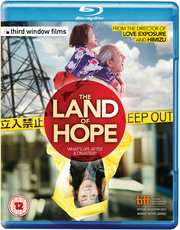
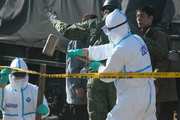
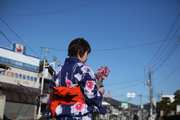
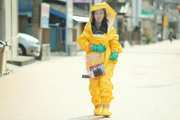

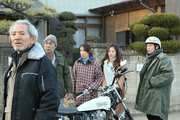
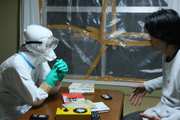
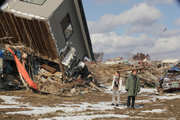



































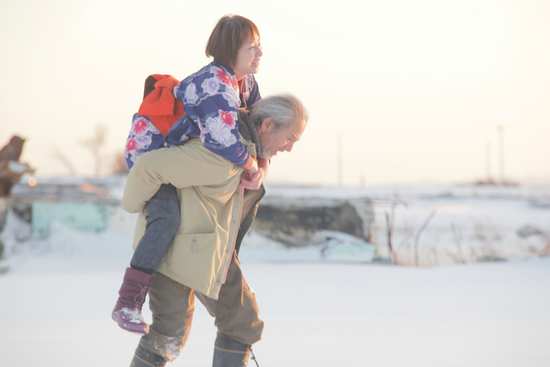



Your Opinions and Comments
Be the first to post a comment!